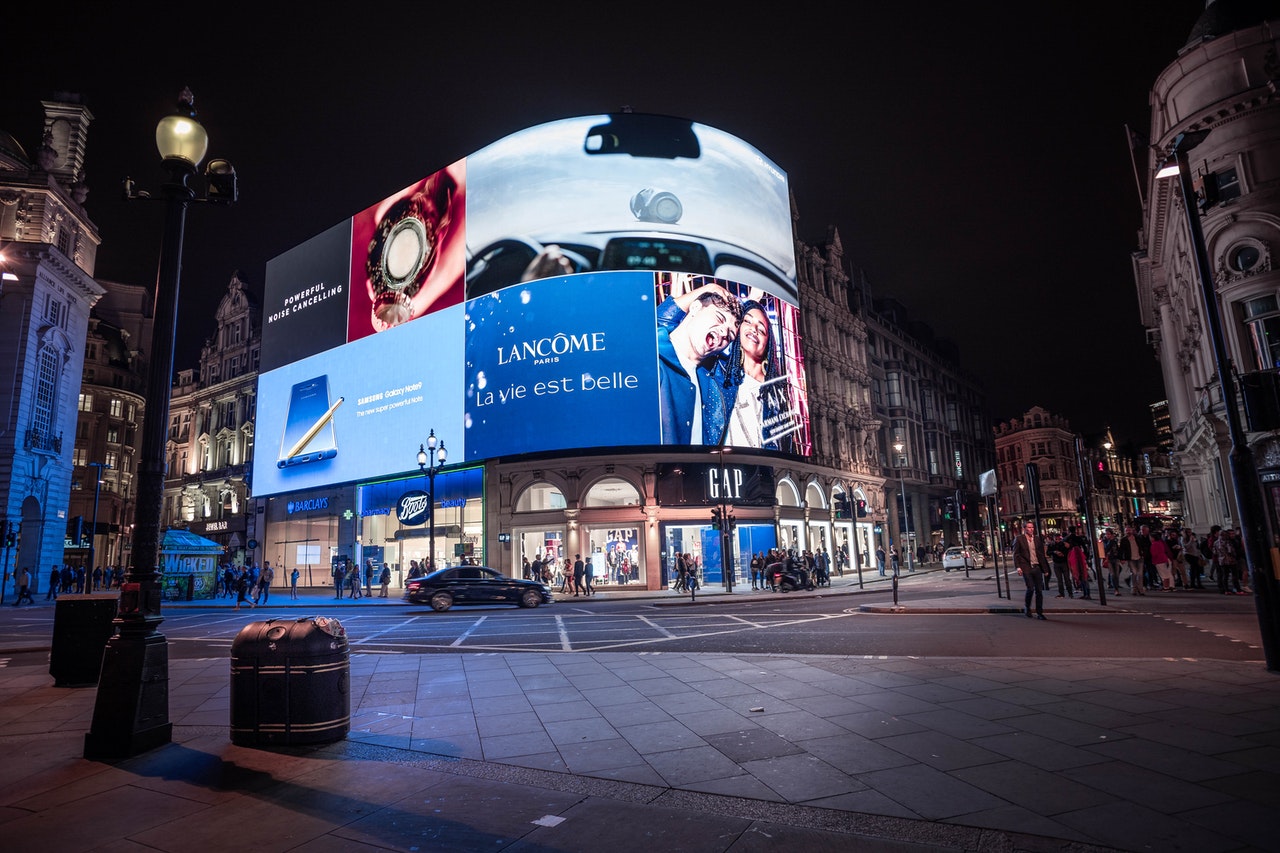If you’re in marketing, you’ve surely heard of digital out-of-home media or DOOH.
In case you’re unfamiliar with it, digital out-of-home (DOOH) media refers to media that appears in public spaces, such as digital billboards and outdoor signage.
Marketers consider it as one of the most effective methods of capturing audience attention and as one of the hottest marketing trends of all time.
Nonetheless, there’s a new term floating around these days: PDOOH.
PDOOH and DOOH have many similarities, but they are not the same. If you’re curious to know what it is and how it works, read on and find out more about PDOOH in the following paragraphs.
What is PDOOH advertising?
PDOOH stands for programmatic digital out of home and refers to the automation of out-of-home (OOH) advertising.
It involves the leverage of machine learning to plan, buy, sell, and measure ads across digital screens.
Examples of PDOOH advertising
These are some examples of programmatic DOOH advertising that you may have seen in your daily life:
- Dynamic displays of supermarket advertising played in or near a mall;
- Road-side dynamic displays of car ads;
- Hotel advertisements played on screens at airport arrival halls.
How does PDOOH advertising work?
PDOOH advertising has two sides: the buy side and the sell side.
- Buy side. An advertiser or agency can purchase any type of advertising programmatically, whether it is online, mobile, or digital out-of-home, by accessing a demand side platform (DSP). DSP software allows advertisers to buy different types of inventory from different publishers.
- Sell side. On the sales side, the publisher sells inventory and audiences using a supply side platform (SSP). As a result, an SSP is a software that allows publishers to manage, sell, and maximise their inventory and audiences.
Publishers can program in a bunch of conditions under which they wish to sell, and buyers can program in a bunch of conditions under which they wish to buy.
As a result, the demand side platform and supply side platform are directly connected between them, bridging the transaction between advertisers and publishers.
What is the difference between DOOH and PDOOH?
Both PDOOH and DOOH display ads on a digital screen in real-time, but the way they’re purchased, sold, and/or delivered is different.
PDOOH enhances both traditional outdoor and digital advertising by automating the purchase, sale, and delivery of inventory across digital screens.
The difference between PDOOH and DOOH also refers to audience targeting and measurement. PDOOH can, in fact, create highly targeted campaigns by utilizing geolocation data, and track in-flight campaign pacing, impressions served, full-funnel attribution, and more.
What are the benefits of PDOOH for advertisers?
- Greater targeting: focus on moments, impressions, and inventory that are important to you.
- Efficiency: automate the planning, buying, measurement, and reporting processes across multiple publishers.
- Flexibility: you can use the ads on multiple digital platforms, including video content and apps.
- Real-time insights: get a real-time view of the sites the ads are reaching, the type of consumer viewing the ad, and the cost of the ad.
Here comes the end of this guide to programmatic out-of-home (PDOOH) advertising. Throughout this article, you have seen how PDOOH offers many advantages over traditional and digital advertising. These advantages will ultimately allow you to quickly and easily target and reach your audience.
